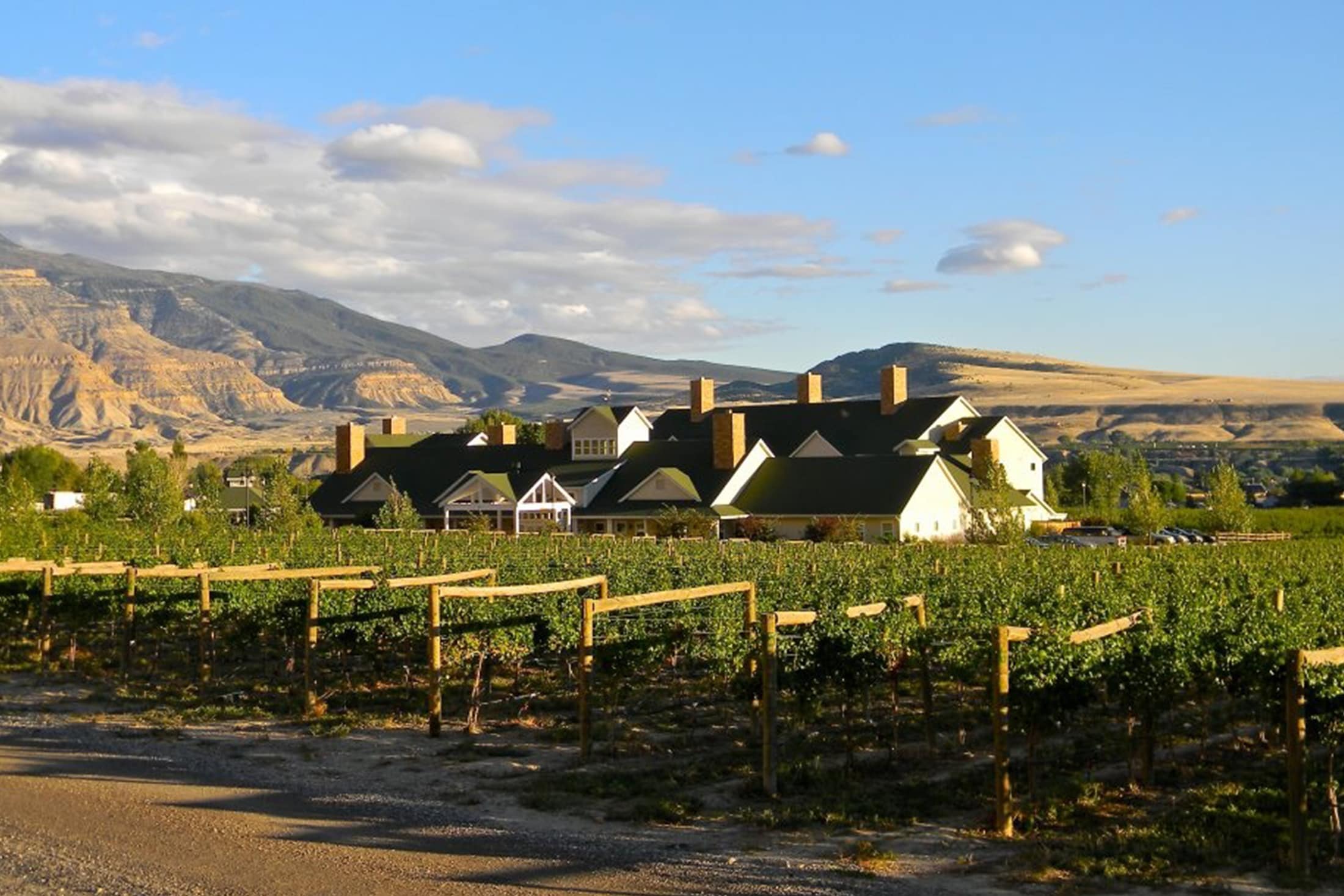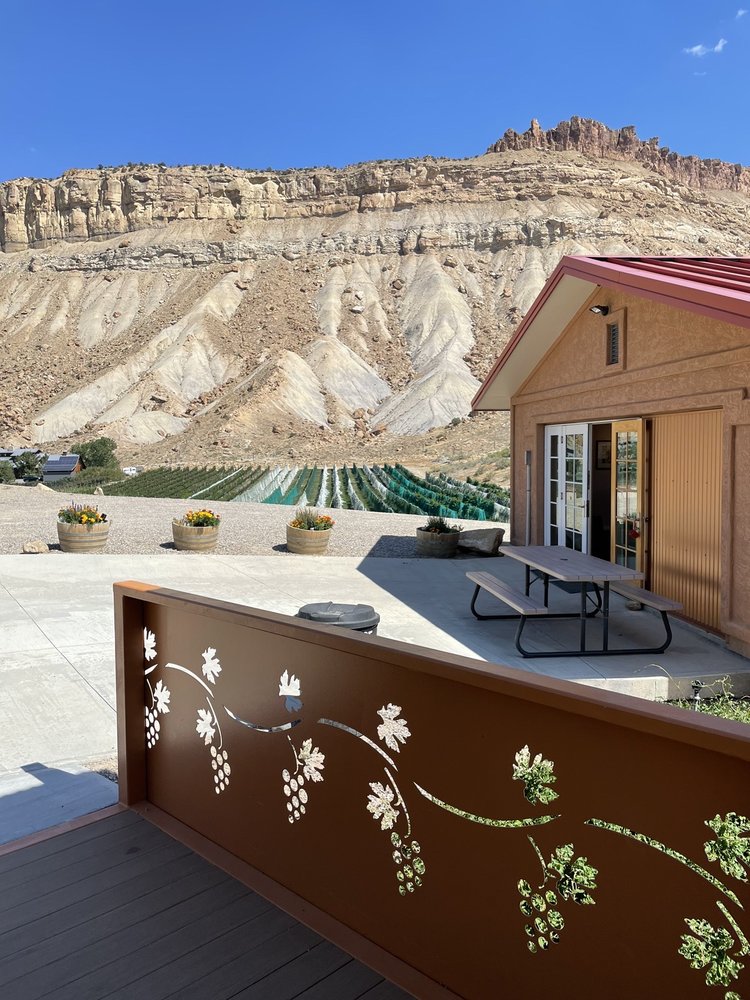Grand Junction, Colorado, serves as a gateway to some of the state’s most cherished wineries, each offering a unique blend of scenic beauty, intriguing winemaking processes, and delightful tasting experiences. Here are blurbs about three distinct wineries in the Grand Junction area that are sure to captivate any wine enthusiast.
Whitewater Hill Vineyards prides itself on crafting Colorado wine from locally grown grapes. With a picturesque vineyard view right from the tasting room, visitors can explore a wide variety of wines ranging from dry whites and reds to semi-sweets and desserts. Whitewater Hill ensures a comprehensive tasting experience, with knowledgeable staff ready to guide guests through the winery’s history, winemaking process, and the unique tasting notes of each wine. The winery hosts daily tastings and is eager to answer any wine-related questions, making it a must-visit for anyone interested in the finer details of viticulture and oenology in the Grand Valley.
Bookcliff Vineyards, although based in Boulder, Colorado, is a family-operated winery known for its award-winning selections such as the 2019 Viognier and the 2018 Cabernet Franc. Visitors to Bookcliff are invited to enjoy wine tastings and tours of the winemaking facilities, offering a glimpse into the care and dedication that goes into each bottle. The winery’s commitment to quality and the passion of its proprietors make it a standout destination for wine lovers exploring the region.
Colterris Winery, nestled in the heart of the Palisade within the Grand Junction area, offers a premier winetasting experience. With a focus on wines produced from 100% Colorado-grown grapes, Colterris takes advantage of the unique climate and fertile soils of the region to cultivate exceptional vineyards. The winery’s dedication to producing high-quality, estate-grown wines showcases the best of Colorado’s wine country, making it a key player in the state’s viticultural scene .
These wineries exemplify the diversity and quality of Colorado’s wine country, particularly in the Grand Junction area. Whether you’re drawn to the comprehensive educational experience offered by Whitewater Hill Vineyards, the award-winning wines of Bookcliff Vineyards, or the estate-grown focus of Colterris Winery, each destination provides a unique insight into the rich tapestry of Colorado winemaking. Visitors are encouraged to explore these wineries to fully appreciate the depth and breadth of flavors that Colorado wines have to offer.
More Colorado Wine Country Info
Colorado’s Grand Valley lies at the topographical junction of heaven and earth. On one side tower the Colorado Rockies, whose lofty summits reach steeple-like into the empyreal sky. In the opposite direction stretches the Colorado Plateau, a weather-sculpted fantasia of soaring cliffs, striated buttes and sinuous canyons. At this scenic merger of landforms lies Grand Junction, a community where location means everything.
The city, with a metropolitan population of about 125,000, lies at the confluence of the Gunnison and Colorado rivers in west-central Colorado, about 26 miles from the Utah state line. It’s a T-shirt and Levi’s sort of community where the median home sells in the $150,000 range. The city supports no spa-studded, five-star resorts and there is nary a mink merchant to be found.
“It’s small, but large enough to have some cultural amenities,” says Robert Bray, owner of Bray & Company Real Estate. “For those few things one might miss, we’ve got Denver or Salt Lake, a five-hour drive away.”
Located 4,600 feet above sea level, the area features a dry climate with warm days and cool nights. Only nine inches of rain fall annually, but with river water available to satiate growth, the Grand Valley has long been Colorado’s orchard. Since the mid-1980s, it’s also become the state’s vineyard. Sixteen wineries produce products that have made connoisseurs take notice.
“The climate is very similar to the upper Rhone region in France, so any of the Bordeaux varieties, such as Cabernet Sauvignon, Merlot, Syrah and Viognier, do very well here,” says Greg Finch of Grande River Vineyards.
Most of the vineyards cover rolling slopes on the east end of the valley, where the light is strong and the soil slightly acidic. Drip irrigation systems allow growers to shape the character of the finished fruit. The vineyards tend to be small and the output from even the largest grower seldom exceeds 8,000 cases annually. Unlike their California counterparts, few here charge for tasting.
“Our attitude is more about educating the public to our region than it is promoting a snobbery of wines,” says Finch.
Many of those tasting visitors exit off Interstate 70, a major transcontinental route that grazes the northern edge of town. Grand Junction is the last major gas stop before hitting the emptiness of eastern Utah. It is also the largest metropolitan area in the 500-mile gap between Denver and Salt Lake City. An urban oasis in the Western wilds, the city offers far more than its size would dictate.
The community’s retail trade includes a good mix from specialty shops to big-box discounters. The town supports an award-winning VA Medical Center and a Level II trauma center hospital, which is undergoing a quarter-billion dollar expansion. The town supports a four-year state college, receives jet flights daily from Denver, Phoenix and Salt Lake City, and has been ranked as one of the top retirement sites in the country.
“It’s big enough that it has fine restaurants, but still small enough that you can meet your neighbor at the grocery store,” says Joanne Luksha, explaining one reason why she relocated here two years ago. Another, of course, was location. “If you want to go into the mountains, it takes maybe an hour and you’re there.”
A favorite getaway destination is Grand Mesa, touted as the largest flat-topped mountain in the world. Conifer forests, aspen glades and 200 lakes cover its 10,000-foot-high, 53-square mile pancake summit. In summer, it’s a favorite spot for picnicking, camping, hiking, biking and horseback riding. When winter’s snow arrives, it becomes a hot spot for snowmobiling, snowshoeing and cross-country skiing. For those who want downhilling, the mesa offers Powderhorn Resort, a close-by alternative to the posh powder playgrounds of Aspen, Vail and Telluride.
Duffers here can choose from a quartet of 18-hole courses. The newest is Redlands Mesa, whose grassy greens flow like emerald bands in a setting of jade-hued sandstone. In 2002, Golf Digest named it the best new affordable public course in America.
Those links lie near the base of Colorado National Monument, a 32-square-mile realm of cliffs and canyons. Its multihued walls come from the same sedimentary rock found in Arches and Canyonlands national parks, but unlike its Utah brethren, this federally protected enclave remains deliciously uncrowded.
Behind the monument lie the McInnis Canyons National Conservation Area and Black Ridge Canyons Wilderness. Here, water lovers can fish, boat and raft the Colorado River while landlubbers hike, backpack or horseback ride an array of desert pathways. Kokopelli’s Trail, a 146-mile mountain bike route leading to Moab, Utah, runs through the area. It is just one of the many trails that have turned the Grand Junction area into one of the West’s premiere mountain biking meccas.
“There are six different areas with literally hundreds of miles of single-track for every level. We have some trails that families go on, and we have trails expert mountain bikers ride,” says Jerry Wolf, manager of Over the Edge Sports. “It’s a nice mix.”
The Grand Junction area is also popular with riders who prefer to peddle only pavement. One popular road ride is to head out to the wineries for an afternoon of tasting. Sipping a prize-winning varietal at the edge of a vineyard draped in a backdrop of crags and cliffs, one can truly appreciate the magnificence of Grand Junction. It’s all about location.


